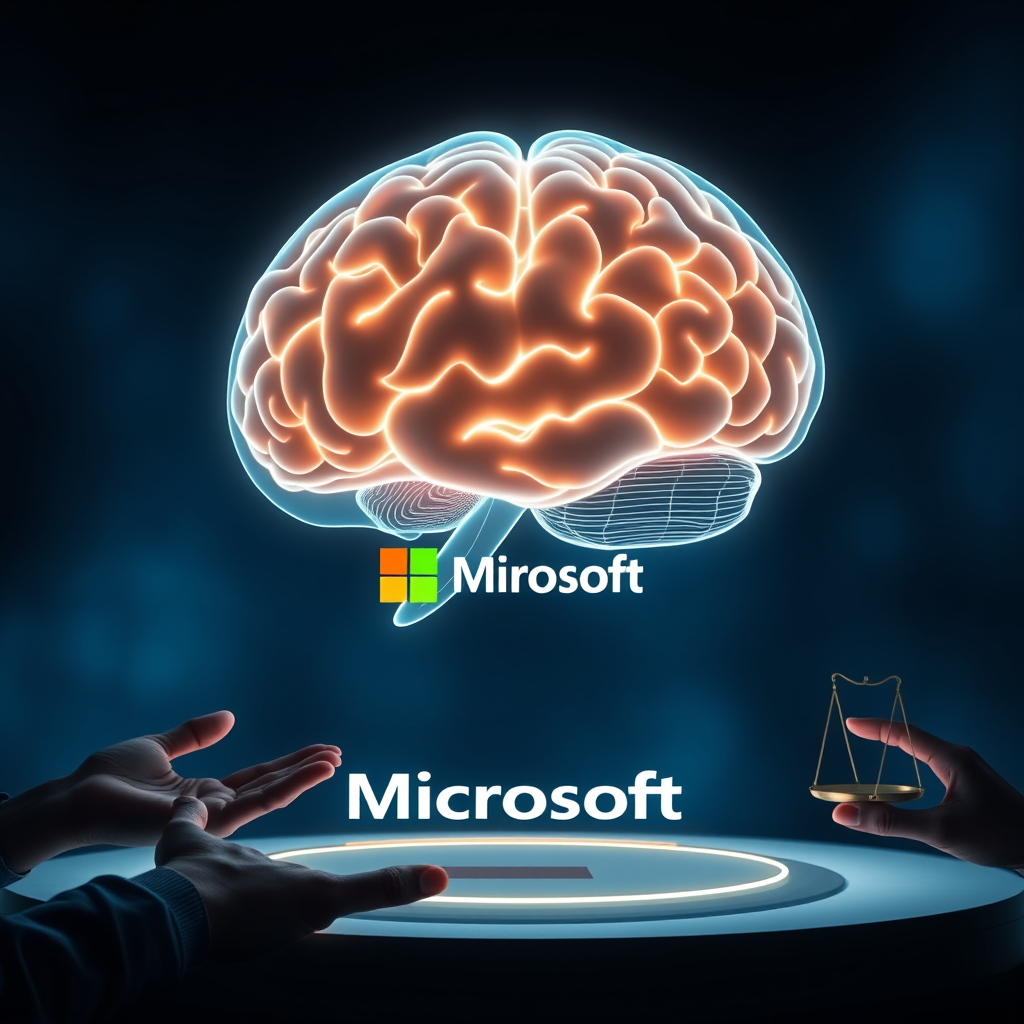
Introduction
Microsoft’s foray into the next frontier of artificial intelligence has taken a bold and, some would say, philosophical turn. In a recent blog post, Mustafa Suleyman—who has been steering the company’s AI division that powers Bing and Copilot—announced the creation of the MAI Superintelligence Team. The team’s mission is to build what Suleyman calls a “humanist superintelligence,” a form of AI that not only surpasses human cognitive capabilities but does so in a way that is aligned with human values, ethics, and societal well‑being. The announcement signals a shift from the purely technical pursuit of ever‑more powerful models to a more holistic approach that foregrounds responsibility, transparency, and the long‑term impact of AI on humanity.
The concept of a humanist superintelligence is not entirely new; it echoes earlier discussions about aligning artificial general intelligence (AGI) with human goals. However, Microsoft’s commitment to this vision is significant because it brings the resources, infrastructure, and commercial clout of one of the world’s largest technology firms to bear on a problem that has largely been the domain of academic research labs. By positioning itself at the intersection of cutting‑edge research and real‑world application, Microsoft is attempting to shape the trajectory of superintelligence in a way that could set industry standards for safety, governance, and ethical deployment.
In the following sections, we will explore the motivations behind Microsoft’s initiative, the technical and philosophical challenges it faces, the potential benefits and risks, and how this move fits into the broader landscape of AI research and policy.
Main Content
The Vision Behind Humanist Superintelligence
At its core, the humanist superintelligence agenda seeks to reconcile the immense power of future AI systems with the need to preserve human agency, dignity, and societal values. Suleyman’s framing suggests that the next generation of AI should not merely be a tool for efficiency or profit but a partner that enhances human flourishing. This vision aligns with a growing chorus among technologists, ethicists, and policymakers who argue that the rapid pace of AI development demands a proactive approach to alignment and governance.
Microsoft’s approach appears to be two‑fold. First, the company intends to push the boundaries of technical capability by investing in large‑scale models, advanced reasoning engines, and multimodal learning frameworks. Second, it aims to embed a robust ethical architecture into these systems, drawing from interdisciplinary research in philosophy, cognitive science, and social science. The result, according to Suleyman, will be an AI that can understand and respect human norms, adapt to diverse cultural contexts, and provide transparent explanations for its decisions.
Technical Challenges and Research Directions
Building a superintelligence that is also humanist is a monumental technical challenge. The team must tackle several intertwined problems:
-
Scalable Reasoning and Common Sense – Current large language models excel at pattern matching but lack deep reasoning and common‑sense knowledge. The MAI team will need to develop architectures that can perform multi‑step inference, causal reasoning, and counterfactual thinking at scale.
-
Alignment and Value Learning – Translating abstract human values into formal constraints that an AI can follow is a classic problem in AI alignment. Microsoft’s strategy involves leveraging reinforcement learning from human feedback (RLHF) at unprecedented scale, coupled with formal verification methods to guarantee that the system’s objectives remain bounded.
-
Explainability and Transparency – For a superintelligence to be trusted, it must be able to explain its reasoning in a way that humans can understand. This requires new interpretability techniques that can operate on models with billions of parameters without sacrificing performance.
-
Robustness and Safety – A system with superhuman capabilities must be resilient to adversarial inputs, distributional shifts, and unforeseen edge cases. The MAI team is expected to pioneer safety protocols that combine rigorous testing, formal safety proofs, and continuous monitoring.
Microsoft’s existing AI research ecosystem—spanning Azure AI, OpenAI collaborations, and internal labs—provides a fertile ground for these breakthroughs. By integrating cloud‑scale computing resources with advanced research, the company can iterate rapidly on both model architecture and safety mechanisms.
Ethical and Societal Implications
The promise of a humanist superintelligence is matched by a host of ethical concerns. If a system can surpass human intelligence in all domains, the stakes for misuse, inequity, and unintended consequences rise sharply. Microsoft’s public commitment to ethics is therefore not just a marketing stance but a strategic necessity.
One of the key ethical questions is how to define “human values” in a global context. Values vary across cultures, religions, and individual beliefs. The MAI team will need to collaborate with ethicists, sociologists, and representatives from diverse communities to build a value framework that is inclusive and adaptable. This inclusive approach could set a precedent for how other tech firms handle value alignment.
Another concern is the potential for concentration of power. A superintelligence that is owned or controlled by a single corporate entity could exacerbate existing inequalities. Microsoft’s announcement includes a pledge to share research findings openly and to collaborate with academia, NGOs, and governments. Whether this openness will translate into real influence on policy remains to be seen, but it is a step toward mitigating the risk of monopolistic control.
Positioning Within the AI Landscape
Microsoft’s initiative is not occurring in a vacuum. Other major players, such as OpenAI, DeepMind, and Anthropic, are also exploring AGI and alignment. However, Microsoft’s unique advantage lies in its hybrid model of commercial product development and open‑source research. The company’s partnership with OpenAI, for instance, has already led to the integration of GPT‑4 into Microsoft products. By extending this collaboration into the realm of superintelligence, Microsoft can leverage both proprietary and open‑source ecosystems.
Moreover, the company’s focus on a humanist perspective could differentiate it from competitors that prioritize performance metrics over ethical considerations. If successful, Microsoft’s approach could become a benchmark for responsible AI development, influencing regulatory frameworks and industry standards.
Potential Applications and Impact
A humanist superintelligence could revolutionize numerous sectors. In healthcare, it could analyze vast datasets to diagnose diseases with unprecedented accuracy while respecting patient privacy and consent. In education, it could personalize learning experiences that adapt to individual cognitive styles and cultural backgrounds. In governance, it could assist policymakers by simulating policy outcomes while ensuring that ethical constraints are upheld.
Beyond practical applications, the philosophical implications are profound. A system that can reason about human values could serve as a catalyst for new forms of collaboration between humans and machines, potentially redefining what it means to be intelligent. If Microsoft’s vision materializes, it could usher in an era where AI is not just a tool but a partner in the pursuit of human well‑being.
Conclusion
Microsoft’s launch of the MAI Superintelligence Team marks a pivotal moment in the evolution of artificial intelligence. By committing to a humanist vision, the company acknowledges that the next leap in AI capability must be accompanied by rigorous ethical safeguards and inclusive value alignment. The technical challenges are immense, but the potential rewards—ranging from transformative societal benefits to a new paradigm of human‑machine collaboration—are equally compelling.
The initiative also raises critical questions about governance, equity, and the distribution of power. How Microsoft navigates these challenges will likely influence the trajectory of AI research for years to come. Whether the company can deliver on its promise of a safe, aligned, and human‑centric superintelligence remains to be seen, but its bold declaration has already sparked important conversations across academia, industry, and policy circles.
Call to Action
If you’re intrigued by the possibilities of a human‑centric superintelligence, we invite you to join the conversation. Subscribe to our newsletter for in‑depth analyses, follow our social media channels for real‑time updates, and consider contributing to open‑source projects that prioritize ethical AI. By staying informed and engaged, you can help shape a future where advanced intelligence serves humanity’s best interests.

